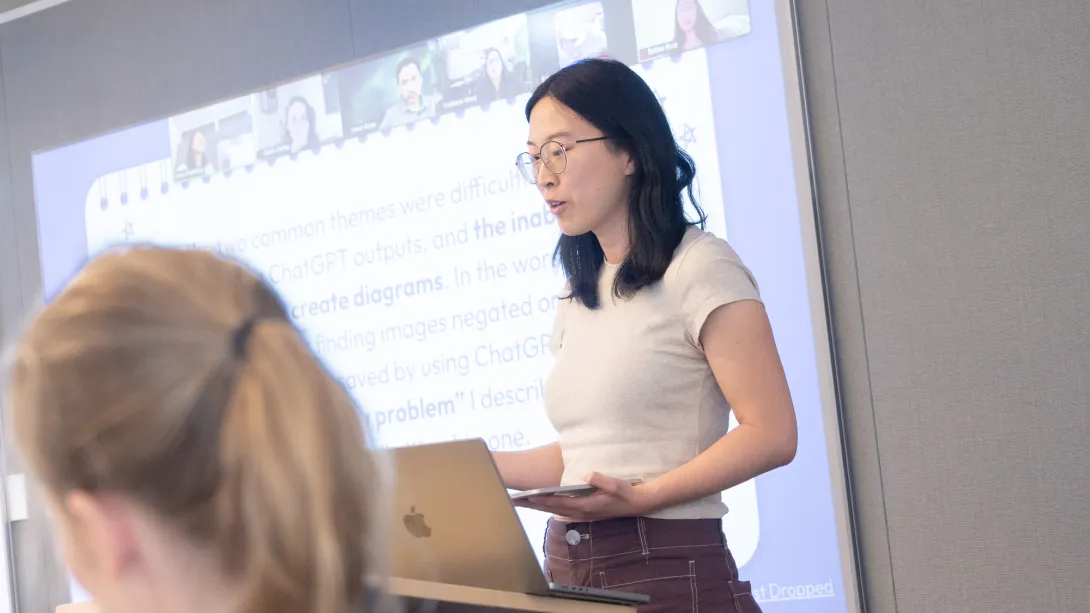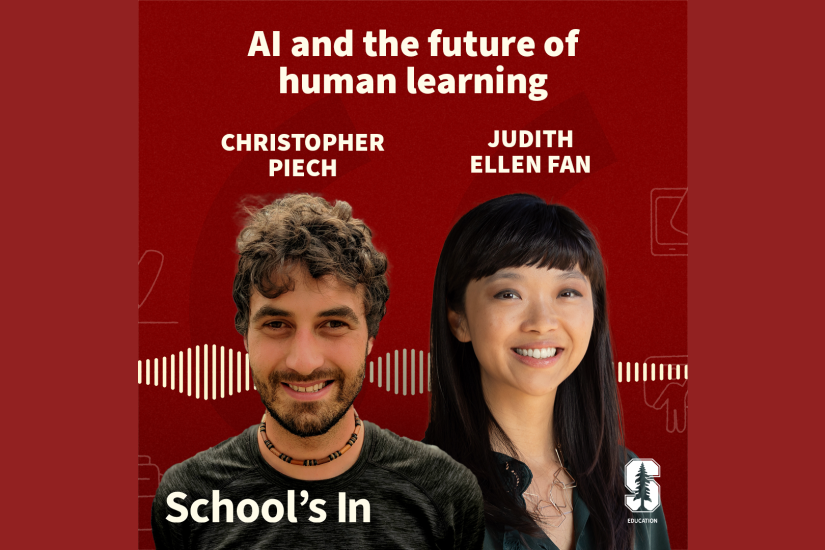
Stanford GSE course tackles gap between edtech research and real-world practice
One of the most pernicious and pervasive pitfalls of edtech research and design is its low rate of successful adoption in schools.
Whether it’s due to improper implementation or deficiencies in the tools themselves, the gap between research and practice can be large, leading to districts spending critical funds on edtech tools and systems with low learning outcomes.
Dora Demszky, assistant professor at Stanford Graduate School of Education (GSE), aims to help address this issue through her course, Empowering Educators via Language Technology, which connects edtech creators with the teachers for whom they’re designing.
“Large language models and AI tools are becoming more common in an educational context, but no one is really talking about all the considerations necessary to make these technologies really useful for teachers,” Demszky said.
“There’s a lot of discussion around AI in education, and this class is importantly distinct from those topics because we are not focused on technologies that get around the teacher, or helping teachers navigate around students’ use of AI, but rather on how we can develop tools that can support educators in improving their instruction, and thereby their students’ learning,” she said.
A teacher-centered approach to edtech
The class, now in its second year, has a combination of 30 GSE and computer science students who address questions of design, implementation, and efficacy in edtech. Through class discussions, collaborating with practicing educators and edtech creators, and creating AI tools of their own, students’ ultimate goal is to improve education.
“Any incremental improvement takes a lot of thoughtful work, and we’re on that journey right now,” said Mei Tan, MA ‘23, and current PhD student at the GSE studying education data science. She is also a teaching assistant for the course. “This is such a unique methodology class for it to be connected to the impact these methods will have out in the world, what happens when they get applied to real-world constraints.”
As part of the class, students are frequently asked to create tools through the lens of the teachers who will use them. They seek input and present their designs to educators.
“One of our first assignments was to interview a teacher and I was very forward with all the ideas I had about introducing technology into bilingual education. But after hearing her feedback, it was the first time I really considered that the issues I thought educators have probably aren’t the most prominent ones they’re dealing with,” said Joshua Delgadillo, a junior in the class studying computer science, with a minor in education.
“One of my biggest takeaways was that some of the things that AI is really good at, like creating a personalized worksheet, aren’t really things an experienced educator would think to use technology for,” Delgadillo said. “Before this class, my thesis around edtech was very tech first and education second, but I’ve been exposed to the importance of putting education first, if we want to make things work.”
“Before this class, my thesis around edtech was very tech first and education second, but I’ve been exposed to the importance of putting education first, if we want to make things work.”

GSE student Rebecca Li Hao presents her project to the class. (Photo: Joleen Richards)
Designing the future of education, collaboratively
A key facet of the course is working with teachers to create technological tools that will augment rather than automate them.
“This type of collaboration is something the field has talked about before but it’s not always clear how to approach creating this dialogue with teachers,” said Rebecca Li Hao, a Learning Design and Technology master’s student at the GSE. “This class gives us a concrete opportunity to have that back and forth so we can learn how to best augment them because replacing teachers with technology doesn’t work, they’re too important.”
For the largest chunk of students’ coursework, they had to design an educational tool that would then be presented to a panel of six teachers.
“It seems critical to have teachers and edtech creators in the same room – for both people building tools for teacher use and teachers who may need to use them later down the line,” said Eric Wilson, a Brooklyn-based high school computer science teacher who sat on the panel. “It’s cool to see that we have some of the most brilliant people in the world making things to help make teaching easier.”
Projects included tools that simulated teacher-student interactions, created graphs from data, and automated feedback, among other uses.
“I feel like I gained an insight into what is out there and that this class is giving me a look forward into what tools my future classes might use,” said Viridiana Word, a panelist from San Diego who’s been teaching for 17 years. “It’s wonderful to see so much energy and see how they’re going to contribute to the field.”
She added, “I can offer my wisdom and experience, and from students I can gain new ideas and a hint at the future to come.”
The class culminated in a blog post co-written by Demszky, Tan and the students that reflected on what they learned about designing for teachers, and the intersections of technology, pedagogy and practice.
“This class is really an environment where, rather than imparting knowledge to the students, we are really figuring things out together,” Demszky said. “After every class, I leave feeling energized and like we all learned something collectively.”
Faculty mentioned in this article: Dora Demszky



